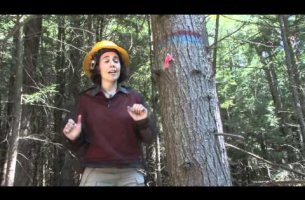You are here
Invasive Plants, Pests and Pathogens
One of the most serious and urgent ecological threat for most of the U.S. is the recurrent introduction of insects, animals, plants, and pathogens which can cause significant changes in natural ecosystems. Exotic organisms compete with and predate on native species, directly change local environments and habitats, and alter ecosystem structure and process. In recent history, exotic pests and pathogens, such as the chestnut blight, gypsy moth, and beech bark disease have exerted a profound effect on New England forests, including the near elimination of several important trees. Today, an increasing number of invasive organisms are part of the New England landscape and act as key stressors on the composition and functioning of native ecosystems. In some cases, these organisms disrupt beneficial interactions among native species, such as obligate mutualisms between native plants and soil fungi. In other cases, entire forest types and ecosystem services are threatened by forest insect pests.
In addition to the researchers and projects listed below, numerous teachers and students in the Schoolyard Ecology LTER Program contribute data through their Woolly Bully: The Invasive Pest, the Hemlock Woolly Adelgid project.
We are currently investigating the landscape, community, and population-level impacts of:
- Hemlock Wooly Adelgid (HWA)
- Asian Longhorned Beetle
- Garlic mustard
- Emerald Ash borer
- Spongy moth
Associated Researchers
Audrey Barker Plotkin
Aaron Ellison
David Foster
Serita Frey (Univeristy of New Hampshire)
Meghan MacLean (UMass Amherst)
David Orwig
Valerie Pasquarella (Boston University)
Evan Pressier (University of Rhode Island)
Kristina Stinson (UMass Amherst)
Jonathan Thompson
LTER Schoolyard Program teachers & students
Related Data & Publications
Publications - Published papers from Harvard Forest related to invasive plants, pests and pathogens.
Datasets - Data and metadata for invasive plants, pests and pathogens research.
Abstracts for Current Research - Summaries of ongoing invasives research at the Forest.


